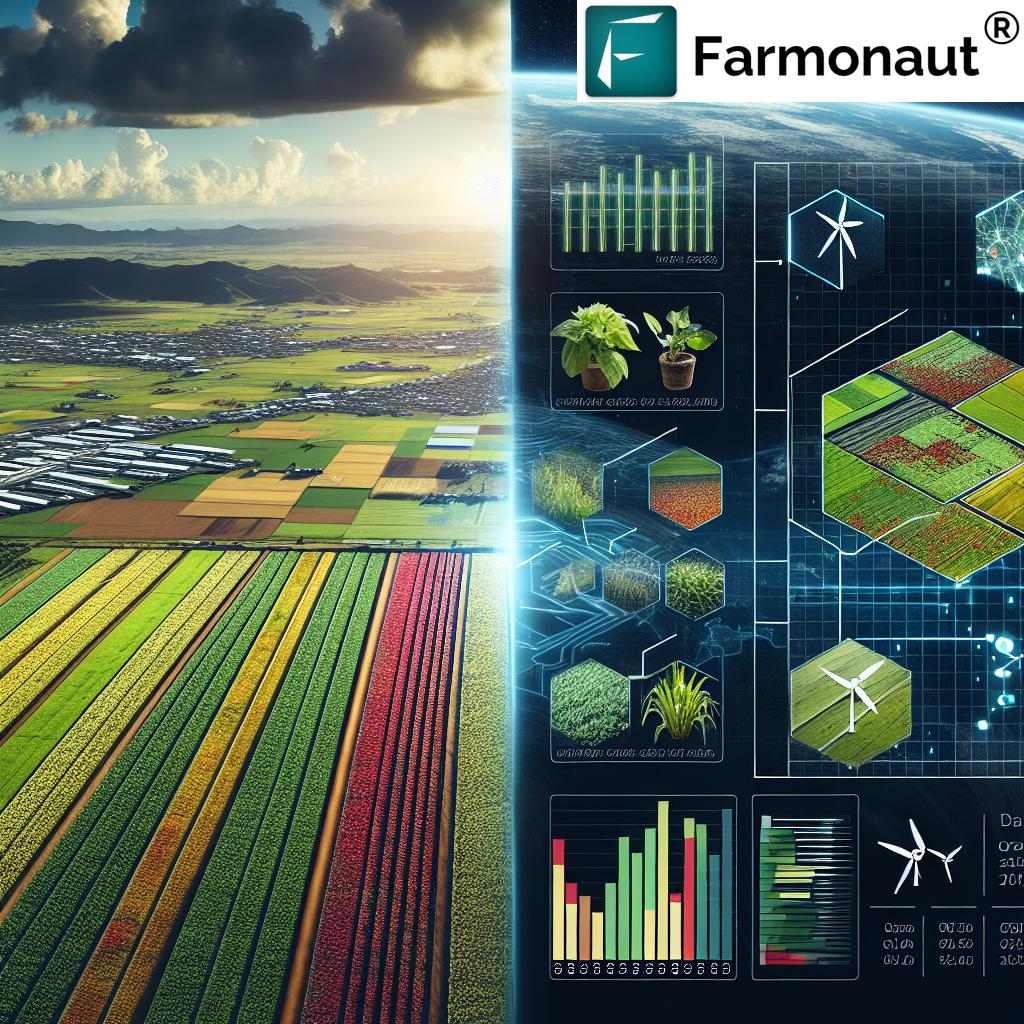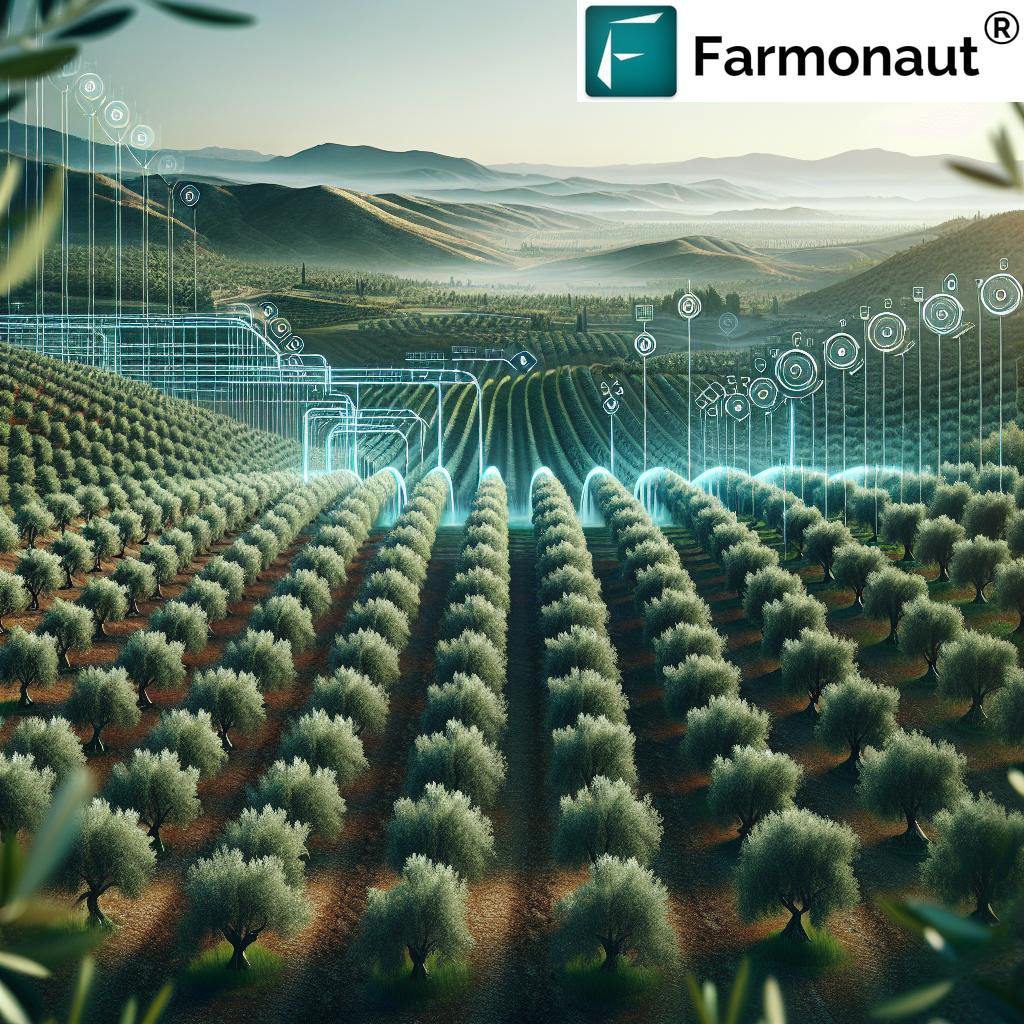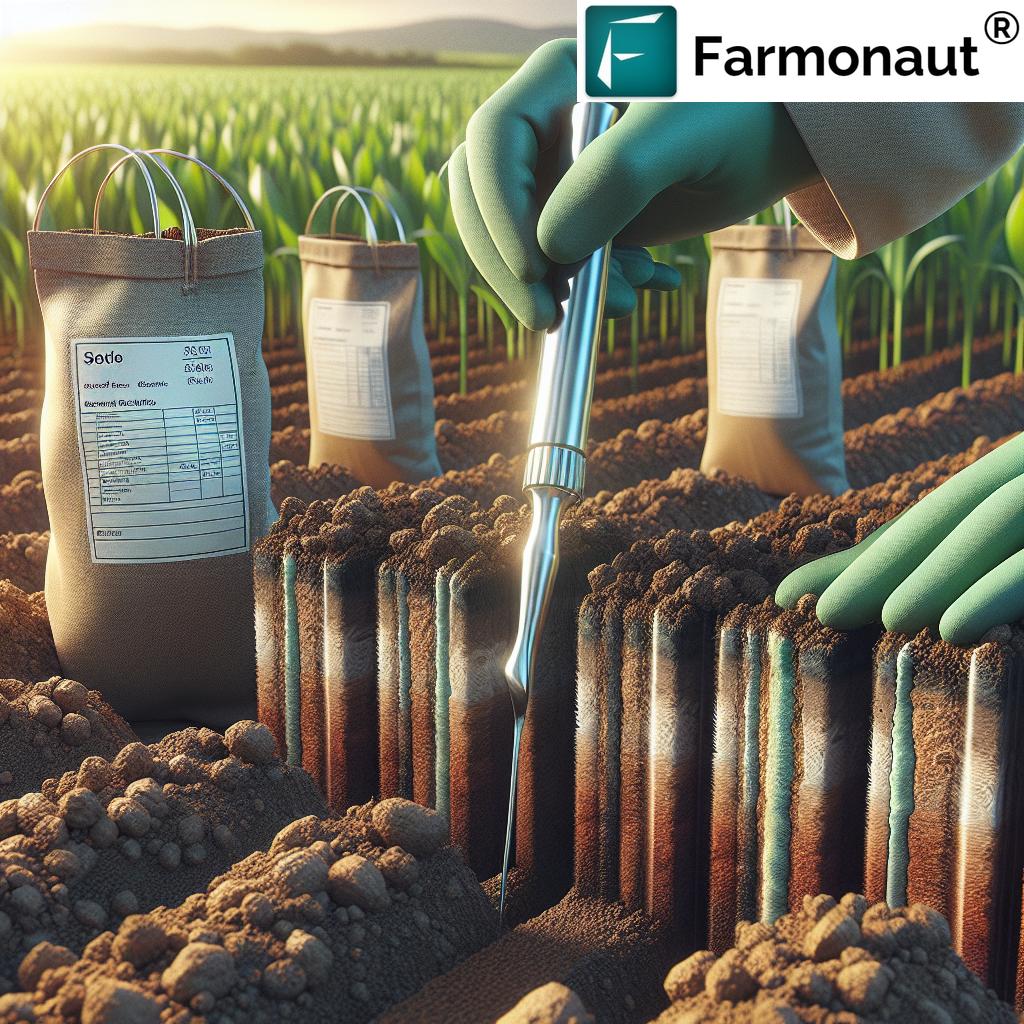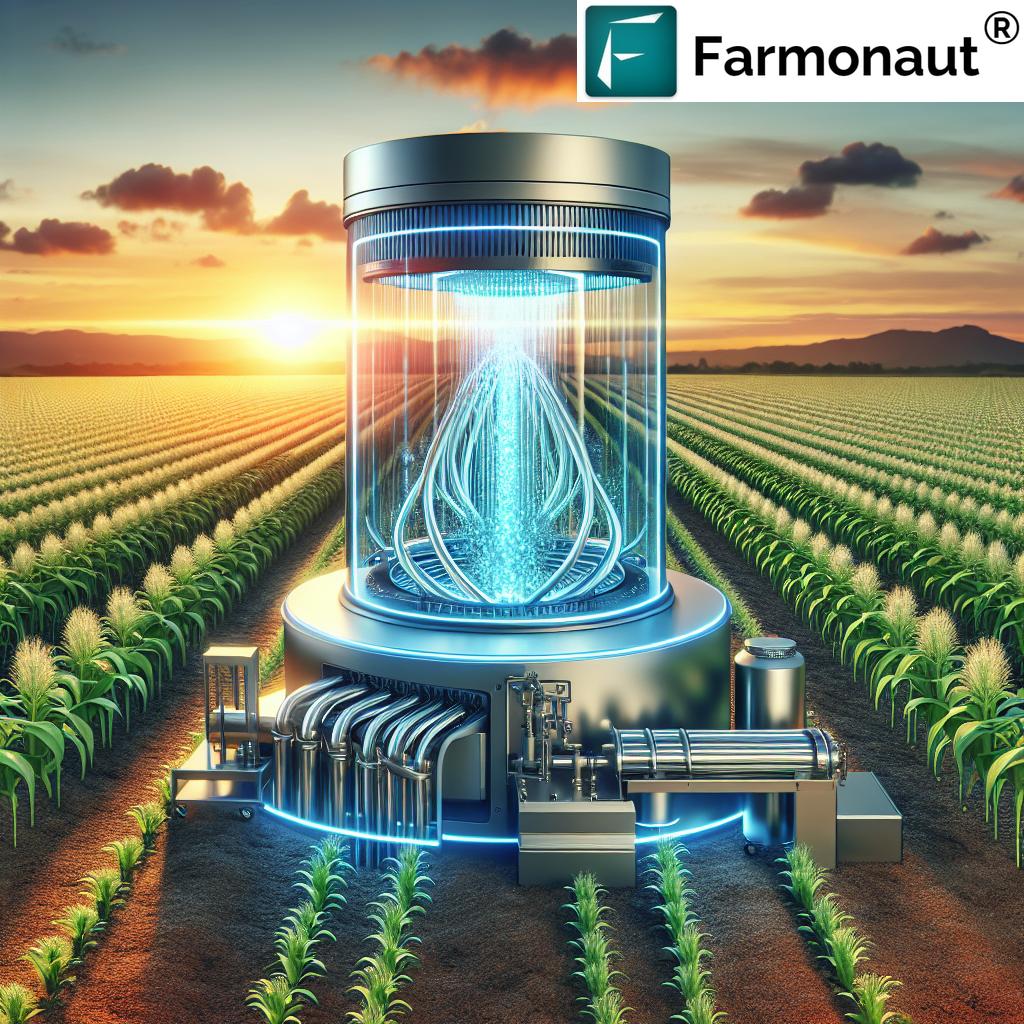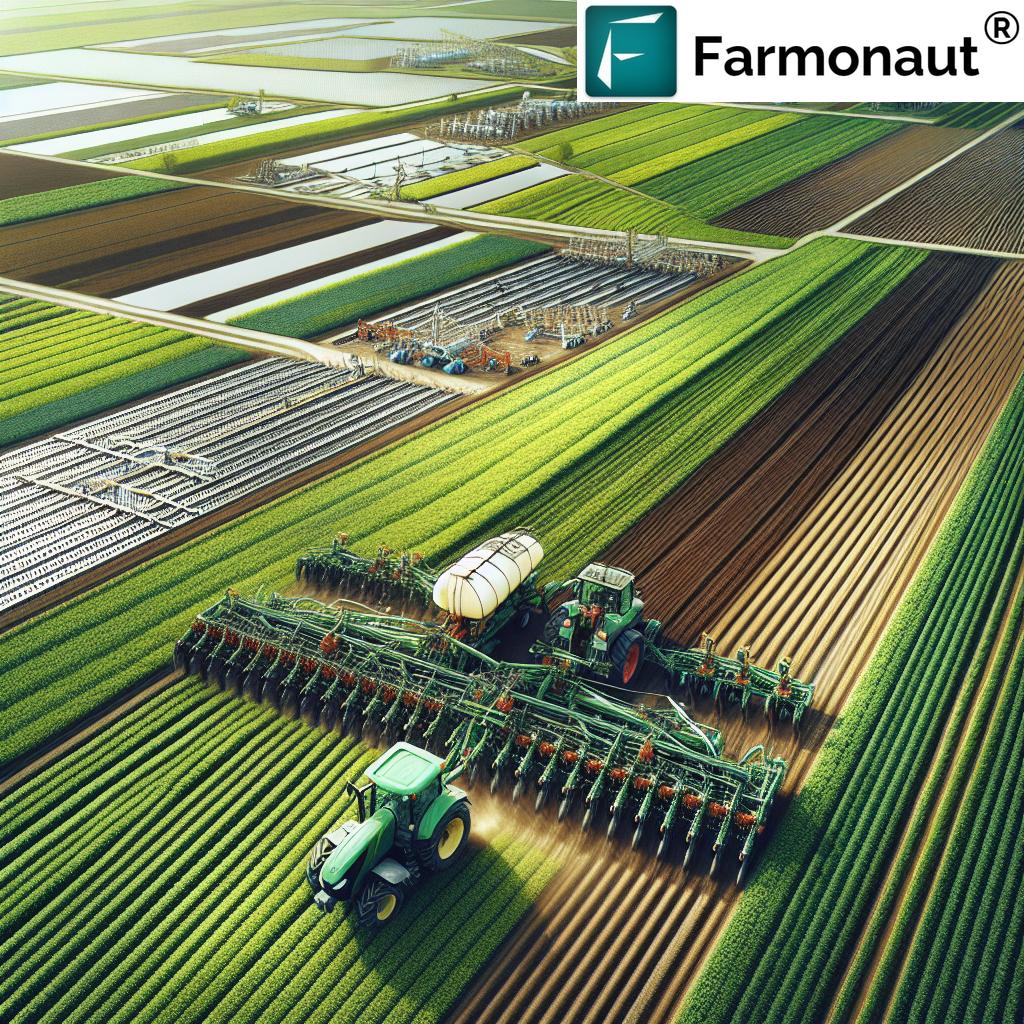
Mastering the Art of Potato Cultivation: A Comprehensive Guide
Potatoes are a staple crop enjoyed worldwide, known for their versatility and nutritional value. At Farmonaut, we understand the importance of this crop and the challenges farmers face in cultivating healthy, high-yielding potato plants. In this comprehensive guide, we’ll explore every aspect of potato growing, from selecting the right varieties to managing pests and diseases. We’ll also discuss how our satellite-based technology can revolutionize potato farming, making it more efficient and productive.
Choosing the Right Potato Varieties
Selecting the appropriate potato varieties is crucial for successful cultivation. Different varieties are suited to various climates, soil types, and intended uses. Here are some factors to consider when choosing potato varieties:
- Growing Season: Early, mid-season, or late varieties
- Intended Use: Table potatoes, processing potatoes, or seed potatoes
- Disease Resistance: Varieties with built-in resistance to common potato diseases
- Climate Adaptation: Varieties suited to your local climate conditions
Some popular potato varieties include:
- Russet Burbank: Ideal for baking and frying
- Yukon Gold: Known for its buttery flavor
- Red Pontiac: Great for boiling and roasting
- Kennebec: Excellent all-purpose potato
- Fingerling: Gourmet variety with unique shapes and colors
Preparing the Soil for Potato Planting
Proper soil preparation is essential for healthy potato growth. Potatoes thrive in well-drained, loose soil rich in organic matter. Here’s how to prepare your soil:
- Soil Testing: Conduct a soil test to determine pH and nutrient levels. Potatoes prefer slightly acidic soil with a pH between 5.8 and 6.5.
- Tilling: Loosen the soil to a depth of 8-12 inches to promote good root development.
- Organic Matter: Incorporate well-rotted compost or aged manure to improve soil structure and fertility.
- Drainage: Ensure proper drainage to prevent waterlogging, which can lead to rot and disease.
At Farmonaut, our satellite-based soil moisture monitoring can help you maintain optimal soil conditions throughout the growing season.
Planting Potatoes: Techniques and Tips
Proper planting techniques are crucial for a successful potato crop. Here’s a step-by-step guide to planting potatoes:
- Timing: Plant potatoes 2-3 weeks before the last expected frost date in your area.
- Seed Preparation: Use certified seed potatoes to ensure disease-free planting material. Cut large seed potatoes into smaller pieces, each with at least one “eye” or sprout.
- Planting Depth: Plant seed potatoes 3-4 inches deep in rows spaced 2-3 feet apart.
- Spacing: Space seed pieces 12-15 inches apart within rows.
- Hilling: As plants grow, mound soil around the stems to protect developing tubers from sunlight.
For those interested in container gardening, potatoes can also be grown in large pots or grow bags. This method is excellent for small spaces or areas with poor soil conditions.
Caring for Growing Potato Plants
Proper care is essential for healthy potato plant growth and optimal tuber development. Here are key aspects of potato plant care:
Watering
Consistent moisture is crucial for potato plants, especially during tuber formation. However, overwatering can lead to disease issues. Here are some watering tips:
- Water deeply and consistently, providing 1-2 inches of water per week.
- Use mulch to retain soil moisture and suppress weeds.
- Avoid overhead watering to prevent foliar diseases.
Our satellite-based soil moisture monitoring at Farmonaut can help you maintain optimal soil moisture levels, ensuring efficient water use and healthy plant growth.
Fertilization
Potatoes are heavy feeders and require proper nutrition for optimal growth and yield. Here’s a general fertilization guide:
- Apply a balanced fertilizer (e.g., 10-10-10) at planting time.
- Side-dress with nitrogen-rich fertilizer when plants are 4-6 inches tall.
- Avoid excess nitrogen, which can promote foliage growth at the expense of tuber development.
Our AI-powered advisory system can provide personalized fertilization recommendations based on your specific soil conditions and crop needs.
Weed Management
Effective weed control is essential for potato cultivation. Weeds compete with potato plants for nutrients, water, and sunlight. Here are some weed management strategies:
- Use mulch to suppress weed growth.
- Cultivate shallowly to avoid damaging potato roots.
- Hand-pull weeds as needed, especially around young plants.
- Consider using herbicides as a last resort, following all label instructions carefully.
Common Potato Diseases and Their Management
Potato plants are susceptible to various diseases that can significantly impact yield and quality. Early detection and proper management are crucial for maintaining healthy crops. Here are some common potato diseases and their management strategies:
Late Blight
Cause: Phytophthora infestans (fungus-like organism)
Symptoms: Dark, water-soaked lesions on leaves, stems, and tubers; white fuzzy growth on leaf undersides in moist conditions.
Management:
- Use resistant varieties when available.
- Implement proper crop rotation.
- Apply fungicides preventatively in high-risk areas.
- Remove and destroy infected plant material.
Early Blight
Cause: Alternaria solani (fungus)
Symptoms: Dark brown, concentric rings on lower leaves; yellowing and leaf drop.
Management:
- Practice crop rotation with non-solanaceous crops.
- Maintain proper plant spacing for good air circulation.
- Apply fungicides at the first sign of disease.
- Remove and destroy infected plant debris.
Bacterial Soft Rot
Cause: Various bacterial species, including Pectobacterium and Dickeya
Symptoms: Soft, watery decay of tubers; foul odor.
Management:
- Use certified disease-free seed potatoes.
- Avoid wounding tubers during harvest and handling.
- Ensure proper storage conditions with good ventilation.
- Practice crop rotation.
Common Scab
Cause: Streptomyces scabies (bacteria)
Symptoms: Rough, corky lesions on tuber surfaces.
Management:
- Maintain soil pH below 5.2 to suppress the pathogen.
- Use resistant varieties when available.
- Practice crop rotation with non-host crops.
- Ensure adequate soil moisture during tuber formation.
At Farmonaut, our satellite-based crop health monitoring system can help detect early signs of disease, allowing for timely interventions and more effective management strategies.
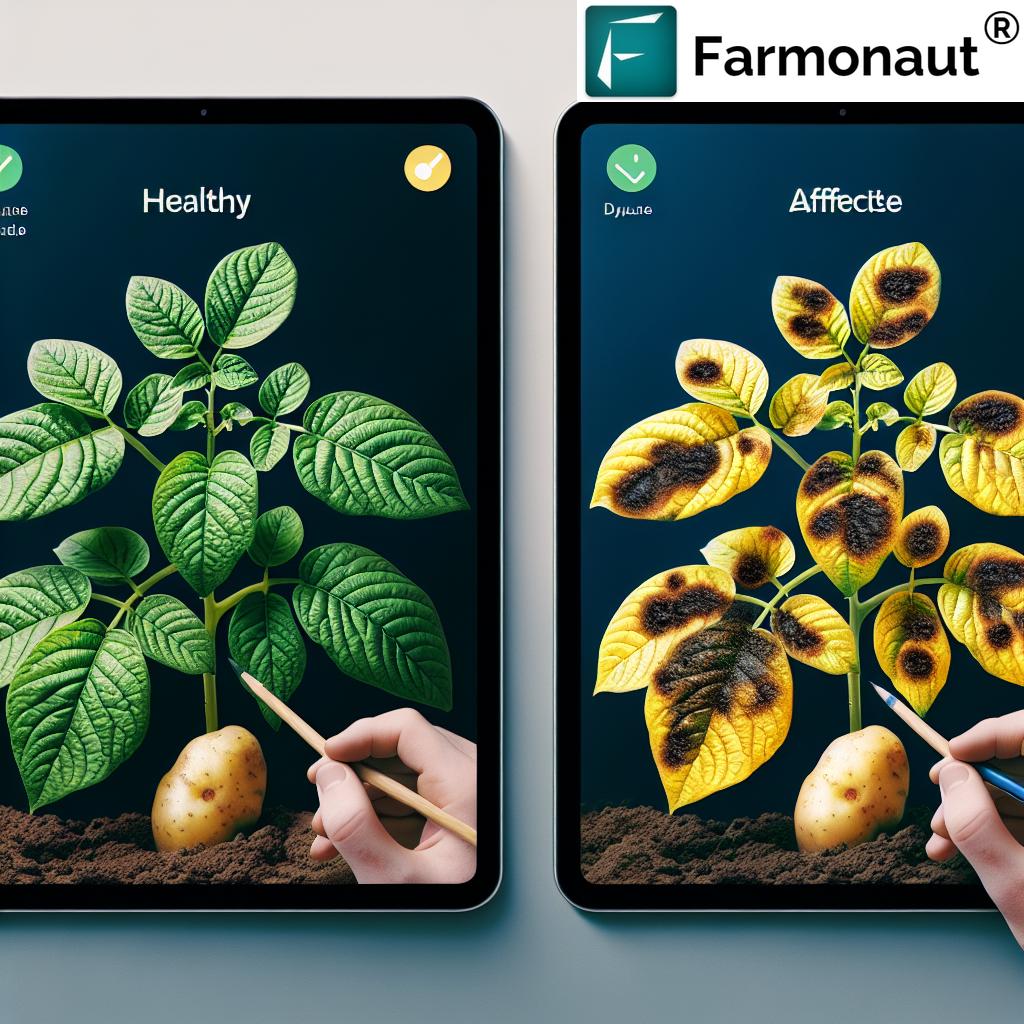
Common Potato Pests and Their Control
Potato crops are vulnerable to various pests that can cause significant damage if left unchecked. Here are some common potato pests and strategies for their control:
Colorado Potato Beetle
Description: Yellow-orange beetles with black stripes; larvae are reddish with black spots.
Damage: Both adults and larvae feed on leaves, causing defoliation.
Control:
- Handpick beetles and larvae in small gardens.
- Use row covers to prevent adult beetles from laying eggs.
- Apply organic insecticides like spinosad or neem oil.
- Implement crop rotation to disrupt the beetle’s life cycle.
Potato Leafhopper
Description: Small, wedge-shaped, light green insects.
Damage: Feeding causes “hopperburn” – yellowing and curling of leaf edges.
Control:
- Monitor plants regularly for early detection.
- Use reflective mulches to repel leafhoppers.
- Apply insecticidal soaps or neem oil for control.
- Consider planting resistant varieties.
Wireworms
Description: Slender, hard-bodied, yellowish-brown larvae of click beetles.
Damage: Create small holes in tubers, reducing quality and marketability.
Control:
- Avoid planting potatoes in recently tilled grassland.
- Use bait traps to monitor wireworm populations.
- Consider applying beneficial nematodes for biological control.
- Implement crop rotation with non-host crops.
Aphids
Description: Small, soft-bodied insects that cluster on leaves and stems.
Damage: Suck plant sap, causing stunted growth and transmitting viral diseases.
Control:
- Encourage natural predators like ladybugs and lacewings.
- Use strong water sprays to dislodge aphids.
- Apply insecticidal soaps or neem oil for severe infestations.
- Remove and destroy infected plants to prevent disease spread.
Our AI-powered pest detection system at Farmonaut can help identify pest infestations early, allowing for more effective and targeted control measures.
Harvesting and Storing Potatoes
Proper harvesting and storage techniques are crucial for maintaining potato quality and preventing post-harvest losses. Here’s a guide to harvesting and storing your potato crop:
Harvesting
- Timing: Harvest potatoes when the plants have died back naturally or 2-3 weeks after cutting back the foliage.
- Soil Conditions: Choose a dry day when the soil is not too wet to prevent soil compaction and tuber damage.
- Method: Use a garden fork or potato digger to carefully lift the tubers from the soil.
- Handling: Handle potatoes gently to avoid bruising or damaging the skin.
Curing
After harvesting, cure potatoes to toughen their skins for better storage:
- Store potatoes in a dark, humid place at 50-60°F (10-15°C) for 10-14 days.
- Ensure good ventilation to prevent moisture buildup.
Long-term Storage
For long-term storage, follow these guidelines:
- Store potatoes in a cool, dark place at 40-45°F (4-7°C) with high humidity (85-90%).
- Use ventilated containers or bins to allow air circulation.
- Check regularly for any signs of sprouting or decay, removing affected tubers promptly.
- Avoid storing potatoes near apples or other ethylene-producing fruits, which can cause sprouting.
Our blockchain-based traceability system can help track the journey of your potatoes from harvest to storage, ensuring quality control and transparency throughout the supply chain.
Innovative Potato Farming with Farmonaut’s Technology
At Farmonaut, we’re revolutionizing potato farming with our advanced satellite-based technologies and AI-powered solutions. Here’s how our platform can benefit potato growers:
Satellite-Based Crop Health Monitoring
Our satellite imagery analysis provides real-time insights into potato crop health, allowing for early detection of stress, disease, or nutrient deficiencies. This enables timely interventions and more efficient crop management.
AI-Powered Advisory System
Our Jeevn AI system offers personalized recommendations for potato cultivation, including optimal planting times, irrigation schedules, and fertilization plans based on local conditions and historical data.
Precision Agriculture Tools
We offer tools for precise field mapping, yield estimation, and variable rate application of inputs, helping potato farmers optimize resource use and maximize yields.
Weather Forecasting and Alerts
Our platform provides accurate, localized weather forecasts and alerts, helping farmers make informed decisions about planting, irrigation, and harvest timing.
Pest and Disease Prediction
By analyzing satellite data and weather patterns, we can predict potential pest and disease outbreaks, allowing for proactive management strategies.
| Feature | Traditional Methods | Farmonaut’s Satellite-Based System |
|---|---|---|
| Frequency of Monitoring | Weekly or bi-weekly manual scouting | Daily satellite imagery updates |
| Accuracy | Limited by human observation and accessibility | High-resolution satellite imagery with AI analysis |
| Cost-effectiveness | Labor-intensive and time-consuming | Efficient, automated monitoring at scale |
| Early Disease Detection | Often detected after visible symptoms appear | Early detection of stress indicators before visible symptoms |
| Crop Scouting Efficiency | Limited to accessible areas | Comprehensive field-wide analysis |
To learn more about how Farmonaut can transform your potato farming operations, visit our application page or explore our API documentation for integration with your existing systems.
Sustainable Potato Farming Practices
As we strive for more sustainable agricultural practices, it’s important to implement eco-friendly techniques in potato cultivation. Here are some sustainable practices for potato farming:
Crop Rotation
Implement a 3-4 year rotation cycle with non-solanaceous crops to break disease and pest cycles, improve soil health, and maintain nutrient balance.
Cover Cropping
Plant cover crops between potato seasons to prevent soil erosion, improve soil structure, and add organic matter.
Integrated Pest Management (IPM)
Adopt IPM strategies that combine biological, cultural, and chemical control methods to manage pests and diseases while minimizing environmental impact.
Water Conservation
Implement efficient irrigation systems like drip irrigation or use our satellite-based soil moisture monitoring to optimize water use.
Soil Health Management
Focus on building healthy soils through organic matter addition, minimal tillage, and balanced fertilization to promote long-term soil fertility.
Biodiversity Promotion
Encourage biodiversity in and around potato fields by maintaining hedgerows, flowering strips, or intercropping to support beneficial insects and natural pest control.
At Farmonaut, our carbon footprint tracking feature can help you monitor and reduce the environmental impact of your potato farming operations, promoting more sustainable practices.
Value-Added Opportunities in Potato Farming
To maximize the profitability of your potato crop, consider these value-added opportunities:
Specialty Varieties
Grow unique or heirloom potato varieties that command premium prices in niche markets.
Organic Certification
Transition to organic potato production to tap into the growing market for organic produce.
Direct Marketing
Sell potatoes directly to consumers through farmers’ markets, CSA programs, or farm stands to capture retail prices.
Value-Added Products
Process potatoes into value-added products like chips, fries, or pre-peeled potatoes for foodservice industries.
Agritourism
Offer potato-themed farm tours, u-pick experiences, or educational programs to diversify income streams.
Our blockchain-based traceability solution can help you authenticate and showcase the unique qualities of your potato products, building consumer trust and potentially commanding higher prices.
Conclusion
Potato cultivation is a rewarding but complex endeavor that requires careful planning, consistent care, and adaptability to changing conditions. By implementing the best practices outlined in this guide and leveraging innovative technologies like those offered by Farmonaut, potato farmers can optimize their operations, increase yields, and produce high-quality crops sustainably.
Remember that successful potato farming is an ongoing learning process. Stay informed about new varieties, emerging pests and diseases, and innovative farming techniques. With dedication, knowledge, and the right tools, you can master the art of potato cultivation and enjoy bountiful harvests year after year.
To start optimizing your potato farming operations with Farmonaut’s cutting-edge technology, download our app for Android or iOS, or explore our API documentation for custom integrations.
FAQs About Potato Cultivation
- Q: How long does it take for potatoes to grow?
A: The growing time for potatoes varies depending on the variety and growing conditions, but generally ranges from 70 to 120 days from planting to harvest. - Q: Can I grow potatoes in containers?
A: Yes, potatoes can be successfully grown in containers or grow bags, making them suitable for small spaces or urban gardening. - Q: How often should I water my potato plants?
A: Potato plants typically need 1-2 inches of water per week, either from rainfall or irrigation. Consistent moisture is crucial, especially during tuber formation. - Q: What causes green spots on potatoes?
A: Green spots on potatoes are caused by exposure to light, which triggers chlorophyll production. These areas can contain higher levels of solanine and should be cut away before consumption. - Q: How can I prevent potato blight?
A: To prevent potato blight, use resistant varieties, practice crop rotation, ensure good air circulation, and apply fungicides preventatively in high-risk areas. Early detection through regular monitoring is crucial. - Q: Can I use store-bought potatoes as seed potatoes?
A: It’s not recommended to use store-bought potatoes as seed potatoes, as they may carry diseases and are often treated with sprout inhibitors. Always use certified seed potatoes for planting. - Q: How do I know when my potatoes are ready to harvest?
A: Potatoes are typically ready to harvest when the plant foliage begins to yellow and die back naturally, or about 2-3 weeks after you’ve cut back the foliage. - Q: What’s the best way to store potatoes long-term?
A: For long-term storage, keep potatoes in a cool (40-45°F), dark, and humid (85-90% relative humidity) environment. Avoid storing them near apples or other ethylene-producing fruits. - Q: How can Farmonaut’s technology help me improve my potato crop?
A: Farmonaut’s satellite-based crop monitoring, AI-powered advisory system, and precision agriculture tools can help you optimize irrigation, detect diseases early, and make data-driven decisions to improve crop health and yield. - Q: Are there any sustainable alternatives to chemical pesticides for potato farming?
A: Yes, sustainable alternatives include biological control agents, companion planting, crop rotation, and the use of resistant varieties. Integrated Pest Management (IPM) strategies combine these methods for effective pest control with minimal environmental impact.



